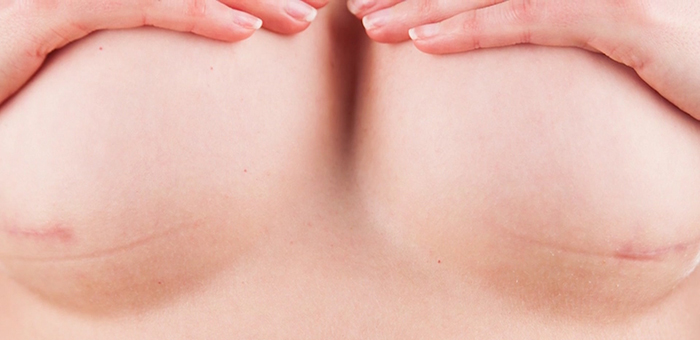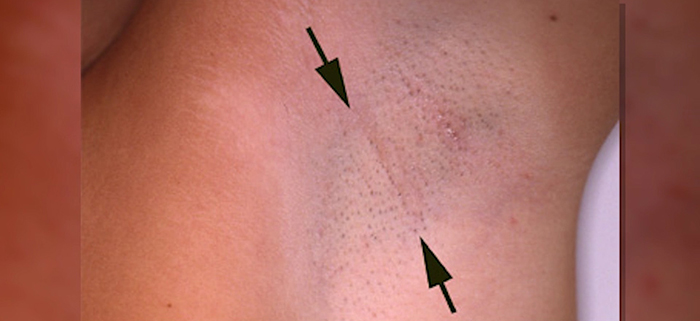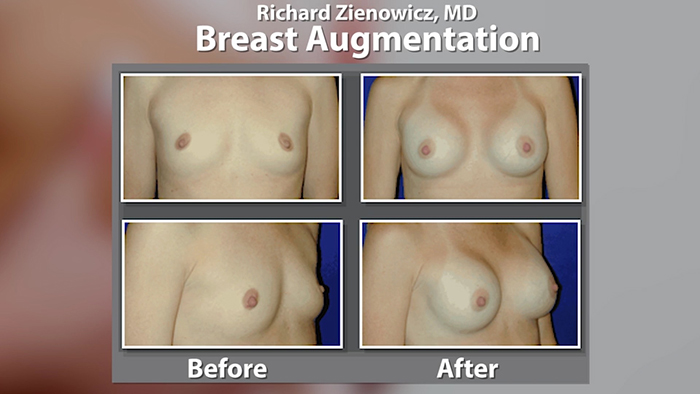The trend in plastic surgery is moving towards smaller, more natural looking breasts. Even the most natural result can be identified as surgically achieved if a scar is visible on the chest. While most incisions can be easily disguised in lingerie and swimwear, there is always the possibility of an intimate situation where the entirety of the breast is revealed. Then, the secret is out.
Unless, that is, there is no scar on the breast to be seen.
Board certified plastic surgeon Dr. Richard Zienowicz of Rhode Island is a major proponent of transaxillary breast augmentation. During a transaxillary breast augmentation the surgeon places breast implants through an incision hidden within the underarm, also known as the axilla. “Why would you want a scar on the breast if you could avoid one?” asks Zienowicz, whose go-to approach in 95% of breast augmentations is the transaxillary incision.
Armpit Scars Heal Beautifully
Genetics play a role in how our scars heal. Patients of Asian ethnicity and those with darker skin tones have an increased chance of developing keloids or hypertrophic scars. These scars can result in thick, raised and discolored tissue around a healed incision, making even very small incisions much more noticeable.
The good news is, not all areas of the body produce equally bad scars in patients prone to bad scarring. Unfortunately, the chest is one area of the body that is more prone to keloid formation. The armpit, on the other hand, is not.
Ethnicities at Increased Risk for Keloid or Hypertrophic Scarring:
- African-American
- Asian
- Hispanic
- Mediterranean
By placing the incision within the armpit, Dr. Zienowicz has found that even patients who are prone to bad scarring are able to heal beautifully. In fact, axilla incisions often seem to disappear altogether. “You can’t find the incisions in most patients. That’s a huge advantage,” says Zienowicz.
Transaxillary Incisions Offer a Direct Path Below the Muscle
The majority of implants, regardless of which incision is used to place them, are put behind the pectoralis major muscle. “We do that to provide a bulk of tissue – the muscle – to prevent rippling, and to prevent the abnormal appearance, to make it look natural. Aesthetically, it looks better,” explains Zienowicz.
Place one hand on your hip and push down. This movement causes your pectoralis major muscle to activate and tighten. Now, using your free hand, you can easily feel the ridge of the pectoralis muscle along the outer edge of your armpit. After you have located this muscle, you can visualize the surgical path behind the muscle from within the armpit.
For an experienced surgeon, placing the implant through the axilla provides a direct route into the area behind the muscle. This approach does not take any longer surgically than a common surgical approach which places the implant through the crease below the breast known as the inframammary fold into the same region behind the muscle. In fact, Zienowicz says he finds the axilla incision a more direct route. “You’re going through far less tissue. It takes me 17 minutes on the average to do a complete augmentation through the armpit.”
Transaxillary Incisions Heal Quicker
When the incision for a breast augmentation is in the inframammary fold or around the nipple, the swelling of the breasts can slow down the healing process due to the pressure placed on the incisions. When the incision is further away from the swelling, the pressure does not affect the incision as it heals. “It heals so quickly in that location because you don’t have the weight of the implant pushing on the incision. There’s absolutely no pressure of an implant in the axilla,” says Zienowicz.
Healing after surgery also extends to the function of the nerves living within the breast tissue. You may know of someone who lost sensation in their nipples after undergoing breast augmentation. Most of the time, the sensation returns either fully or partially after the nerves recover. While other breast augmentation incisions can result in damaged or cut nerves, the nerves remain largely undisturbed with the transaxillary approach. This translates to a quick recovery and a full return to normal sensation after surgery.
Transaxillary Approach Works Well for Both Saline & Silicone Implants
It’s a common misconception that only saline implants can be inserted through the armpit incision. Using a special tool called a Keller Funnel, suregons choosing the transaxillary approach are able to place silicone implants through a small hole in the armpit and position them appropriately. With saline implants, surgeons use an even smaller incision to insert the deflated implant, inflating them after they are in position behind the muscle.
Minimal Blood Loss, Minimal Postoperative Pain
During surgery, Zienowicz injects numbing solution into the muscles situated between the ribs, which helps take away pain both during and after surgery. This also introduces epinephrine, causing the blood vessels in the area surrounding the surgical site to constrict, which reduces bleeding. “It’s really a kind technique,” concludes Zienowicz.


















Facebook
Twitter
Instagram
YouTube
RSS